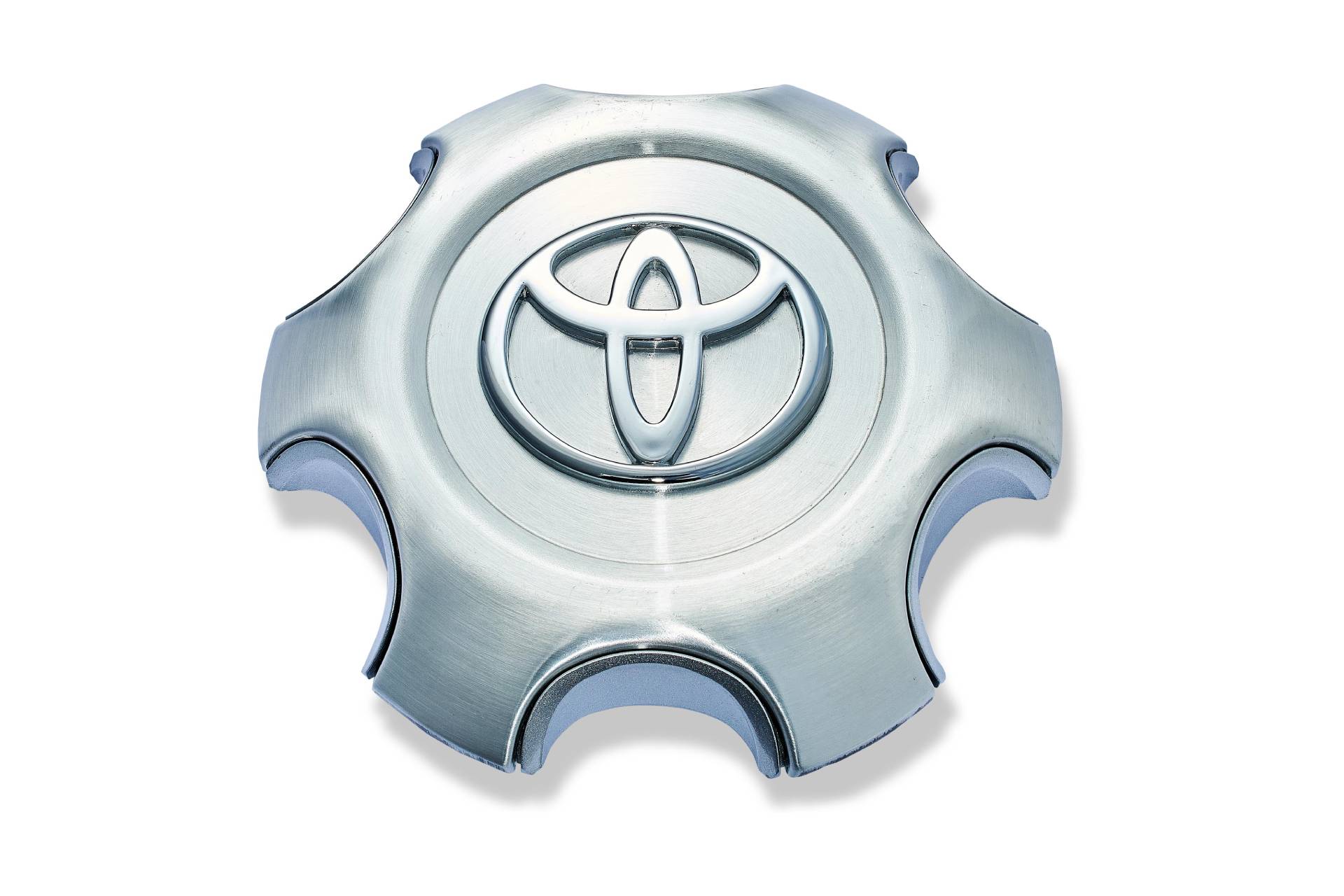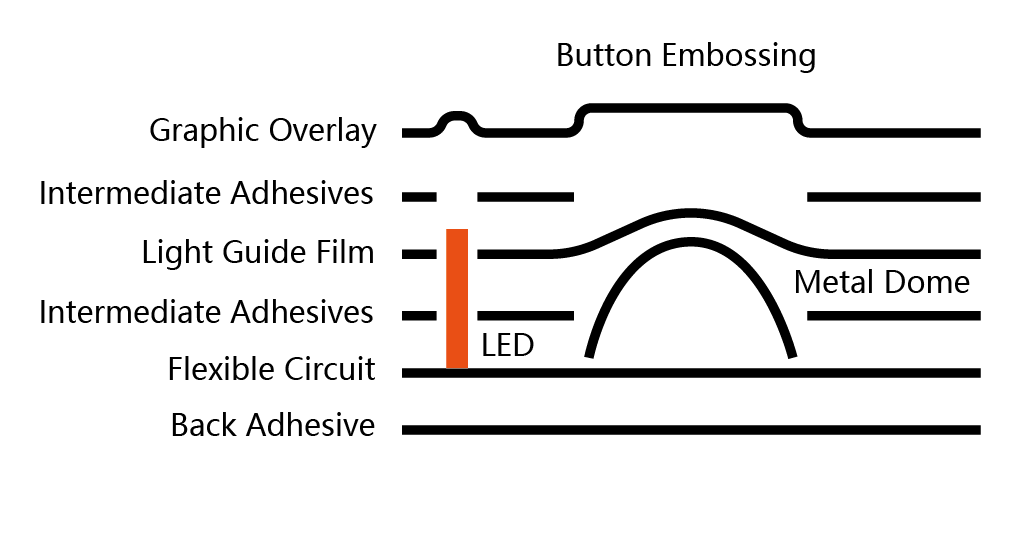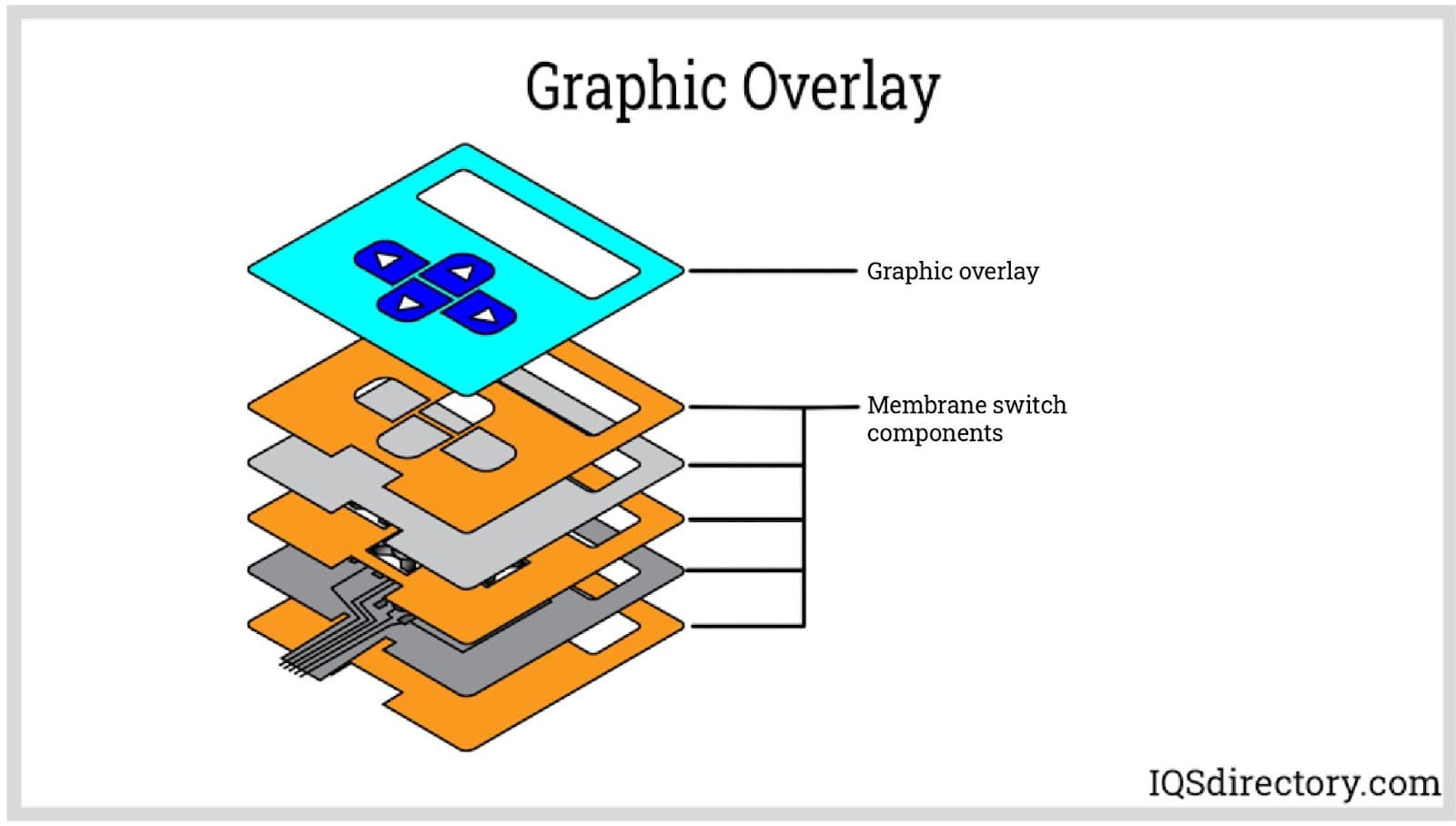Exploring membrane switch applications in extreme environments
Understanding the Relevance of Membrane Layer Switch Over in Modern Electronics
Membrane layer switches are indispensable parts in modern digital gadgets. They provide a mix of capability and style that enhances customer communication. Their light-weight and long lasting nature makes them suitable for numerous applications. As sectors evolve, the demand for modification and progressed functions expands. Understanding just how membrane switches add to development discloses their significance fit the future of electronic devices. What lies ahead for this innovation?
The Basics of Membrane Layer Switch Innovation
Although usually ignored, membrane switch modern technology plays a vital duty in the modern-day electronic devices landscape - membrane switch. These gadgets, made up of several layers, act as interface for various digital products, ranging from household devices to clinical devices. A typical membrane button is composed of a visuals overlay, a spacer layer, and a circuit layer, which are carefully constructed to produce a useful interface.When pressure is applied to the overlay, the circuit layer is finished, enabling signals to be transferred to the tool. This technology is understood for its adaptability, enabling modification in design, shape, and performance to satisfy specific customer demands. Additionally, membrane switches are light-weight and slim, making them ideal for applications where space is a costs. Their toughness and resistance to ecological factors further boost their appeal, guaranteeing they can withstand harsh problems while maintaining functionality. Overall, membrane switch technology is important to creating reliable and user-friendly digital gadgets

Trick Advantages of Membrane Switches Over
Membrane layer changes offer several vital advantages that make them a recommended selection in different electronic applications. Their design permits for a small form aspect, making it possible for makers to create sleek and lightweight gadgets. Additionally, membrane buttons are resistant to dirt, wetness, and chemicals, which enhances their durability and long life popular environments. The responsive comments given by these buttons can improve user experience, making them user-friendly and simple to operate.Furthermore, membrane layer switches can be personalized with diverse graphics and colors, permitting unique branding opportunities. The manufacturing process is normally affordable, particularly for high-volume manufacturing, as it lowers assembly time and streamlines style. Lastly, membrane layer switches over need very little upkeep, contributing to reduced general operational prices. These advantages highlight their growing appeal in modern electronics, where dependability and user-friendly interfaces are necessary.

Applications Throughout Various Industries
The versatility of membrane switches allows their extensive fostering throughout numerous industries. In the medical area, they are commonly used in diagnostic devices and client surveillance systems, offering a durable interface immune to pollutants. The vehicle industry uses membrane switches for dashboard controls, improving customer experience with smooth layouts that hold up against rough problems. In customer electronic devices, they work as control panels for gadgets such as microwaves and coffee manufacturers, giving a straightforward user interface that is very easy to tidy. The aerospace sector employs membrane switches in cockpit controls, where integrity and space efficiency are vital. Additionally, the industrial sector leverages these buttons in equipment and control systems to ensure durable operation sought after settings. This wide array of applications underscores the adaptability of membrane switches, making them important parts in improving functionality and user communication across diverse technical landscapes.
Personalization and Style Versatility

Future Fads in Membrane Layer Switch Over Development
Emerging trends in membrane layer switch growth indicate a growing emphasis on enhanced performance and integration with wise innovations. As customer demand for a lot more innovative digital gadgets rises, makers are concentrating on producing membrane layer switches over that not only serve standard functional look these up duties however likewise integrate attributes like touch sensitivity, backlighting, and haptic feedback.Furthermore, developments in products are expected to improve resilience and environmental resistance, making membrane switches ideal for varied applications in sectors such as medical care, vehicle, and consumer electronics. The combination of capacitive touch innovation is most likely to end up being a lot more common, permitting for sleeker layouts and improved individual interfaces. membrane switch.Additionally, the rise of the Net of Things (IoT) is motivating the advancement of membrane switches over that can communicate wirelessly with various other gadgets, boosting interconnectivity. Overall, the future of membrane layer switch modern technology appears promising, driven by technology and the search of easy More hints to use options
Frequently Asked Concerns
Just How Do Membrane Layer Switches Compare to Typical Mechanical Buttons?
Membrane buttons, being more space-efficient and using a sleek layout, comparison with typical mechanical switches that give responsive comments. The previous typically include personalized graphics, while the last normally guarantee toughness and dependability in various applications.
What Materials Are Generally Used in Membrane Switch Manufacturing?
Membrane switches are usually created making use of materials such as polyester, polycarbonate, and published conductive inks. These products give versatility, responsiveness, and longevity, making them suitable for various applications in electronic tools and interface.
Can Membrane Switches Over Be Fixed or Recycled?
Membrane layer buttons can commonly be fixed, especially if small concerns develop, such as sticky failure or surface area damages. Full reuse is normally limited due to put on and potential degradation of materials over time.
Just How Do Ecological Factors Affect Membrane Switch Over Efficiency?
Ecological aspects, such as direct exposure, humidity, and temperature level to chemicals, considerably influence membrane switch efficiency. Extreme problems can cause degradation, impacting responsiveness and longevity, eventually compromising the capability of the gadget in numerous applications.
What Is the Common Life Expectancy of a Membrane Layer Switch?
The common life-span of a membrane button generally ranges from 1 to 5 million actuations, relying on factors such as use frequency, ecological problems, and the materials used in manufacturing, affecting durability and performance durability. A typical membrane layer button consists of a graphic overlay, a spacer layer, and a circuit layer, which are carefully assembled to create a practical interface - membrane switch.When stress is applied to the overlay, the circuit layer is finished, enabling signals to be transferred to the device. The responsive responses provided by these switches can boost user experience, making them instinctive and simple to operate.Furthermore, membrane buttons can be tailored with diverse graphics and colors, permitting for one-of-a-kind branding chances. As customer need for more sophisticated digital devices increases, makers are concentrating on producing membrane layer changes that not only serve standard functional functions but also include attributes like touch level of sensitivity, backlighting, and haptic feedback.Furthermore, improvements in products are anticipated Extra resources to enhance longevity and ecological resistance, making membrane switches over ideal for varied applications in sectors such as healthcare, automobile, and consumer electronic devices. The combination of capacitive touch innovation is most likely to become much more prevalent, permitting for sleeker layouts and enhanced user interfaces.Additionally, the rise of the Net of Points (IoT) is motivating the advancement of membrane switches over that can connect wirelessly with various other tools, improving interconnectivity. Membrane buttons, being more space-efficient and supplying a smooth design, comparison with typical mechanical buttons that offer responsive comments